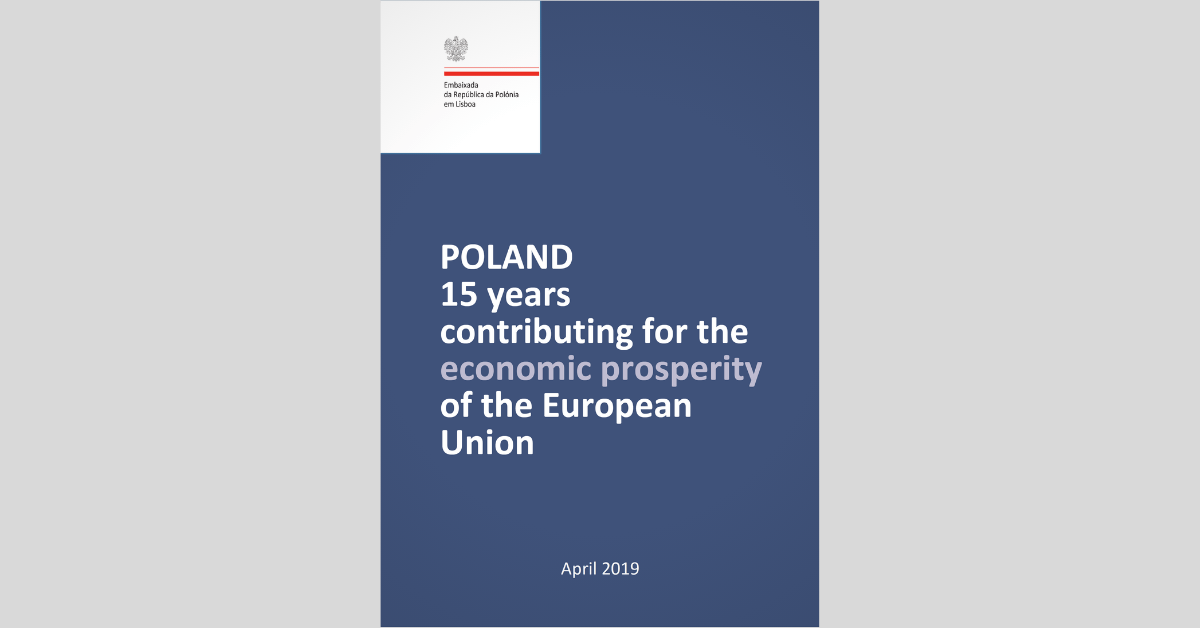
The Polish success (since it joined the EU fifteen years ago), can be summarized in the four numbers of its convergence towards the GDP per capita average of:
1) – The other nine countries which joined the EU in 2004: + 14%;
2) – The EU-28: + 22%;
3) – The EU-15: + 23%; and
4) – Portugal: + 30%.
Excerpt of the booklet on the whole analysis made by Professor Sá, at the request of the Polish Embassy :
In fifteen years Poland’s GDP per capita has approached (almost) 23% of the EU-15 average; 22% of EU-28; and 14% higher than the 2004 enlargement countries average.
Regarding Portugal? In 2004 Polish income per capita was only 62%; today it is more than 92% of the Portuguese.
This makes of Poland an excellent example of success.
Which diagrams synthesize it? What are the causes? And why is it so important to disclose it?
Here are the three sections of this short text, always using official statistics (Eurostat, Ameco, OECD, IMF, World Bank), or in their absence, independent sources (NGOs such as Transparency International, Heritage Foundation, etc.).
2.1. Poland compared to four standards
The most appropriate way to evaluate Polish performance is to compare it with similar countries that have similar circumstances, since as Ortega y Gasset put it: I am myself and my circumstances.
That is, to compare Poland with the other European countries. And let’s do it by increasing level of demand. First, comparing Poland with the other enlargement countries. Then with the EU-28 (which includes those and also the richest). Then (maximum degree of demand) with EU-15, the core of the richest countries. And finally with Portugal, considered by many to be a success story in Europe and thus bring the dimension of Polish success to our own experience.
If you want to see the whole booklet, please visit the following link: https://bit.ly/2lLzhvu
